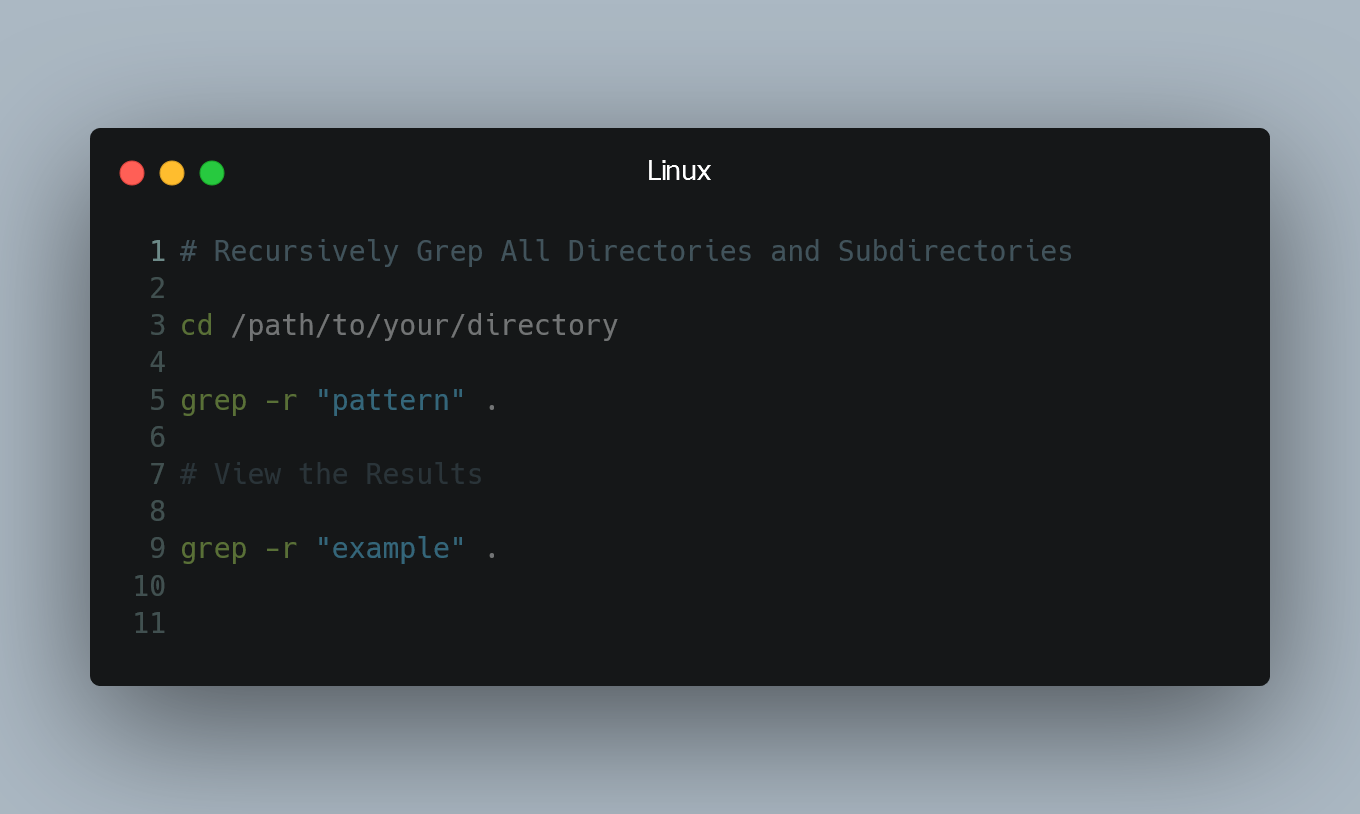
To search for a specific pattern in all directories and their subdirectories in Linux, you can use the grep command with the -r option.
Using the grep Command
The grep command is a powerful tool to search for text patterns in files. By using the -r option, you can recursively search for the specified pattern in all directories and subdirectories.
Step 1: Open Your Terminal
Open your terminal or command prompt to access the Linux command-line interface.
Step 2: Navigate to the Target Directory (Optional)
If you want to start the search from a specific directory, use the cd command to navigate to that directory:
cd /path/to/your/directory
Step 3: Run the Recursive grep Command
To perform a recursive search for a pattern, use the grep command with the -r option, followed by the pattern you want to search for:
grep -r "pattern" .
The . at the end of the command specifies the current directory as the starting point for the search. If you navigated to a specific directory in Step 2, the . should be replaced with that directory path.
Step 4: View the Results
After running the command, grep will display a list of files that contain the specified pattern, along with the matched lines and line numbers. If the pattern is found in a file, the filename and the matching line will be printed on the terminal.
Example: Searching for the Word "example"
Here's an example command to search for the word "example" in all directories and subdirectories:
grep -r "example" .
0 Comment

